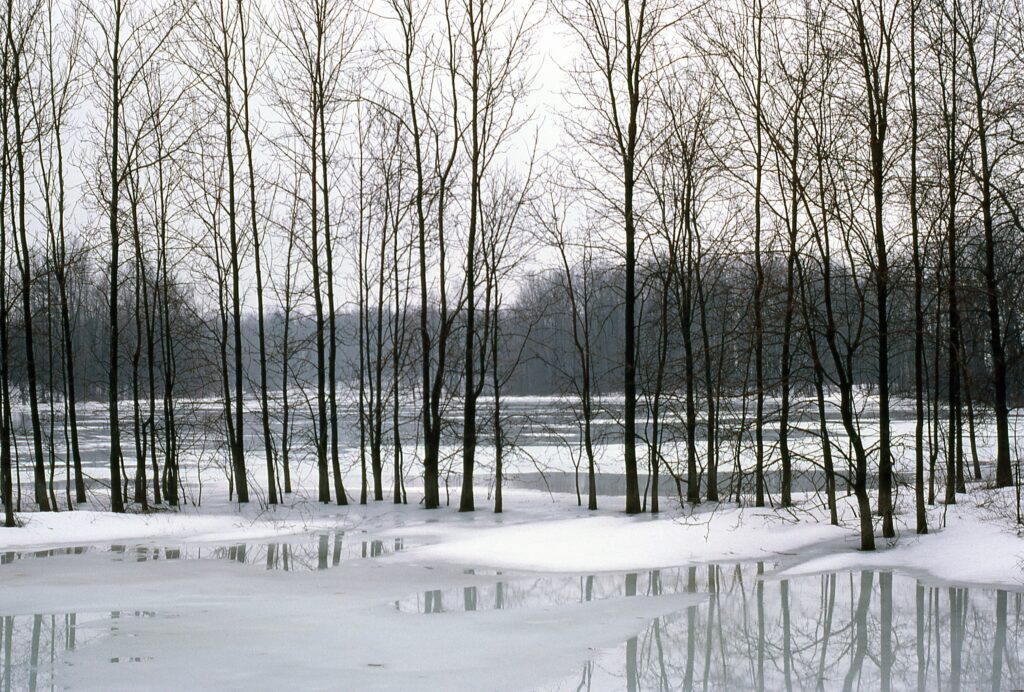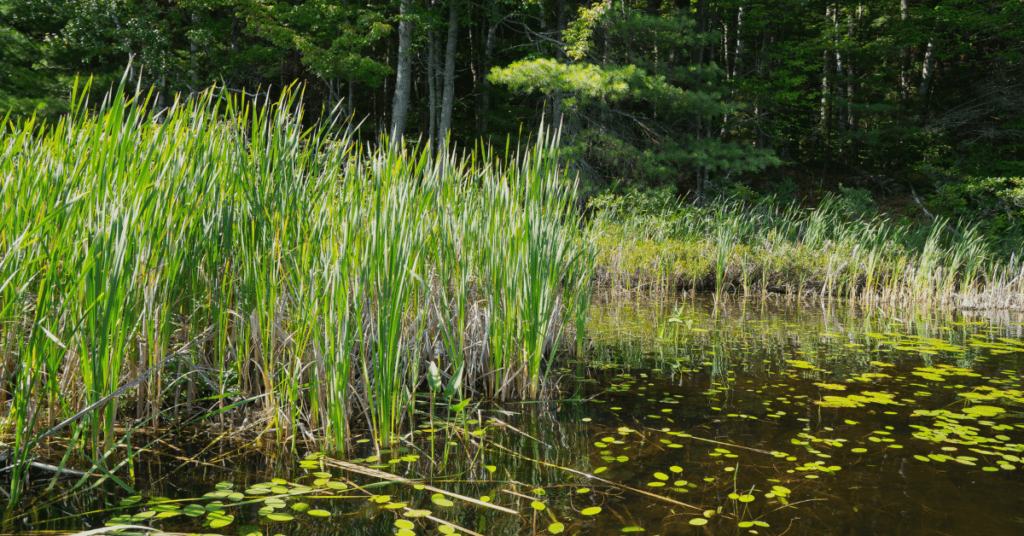This winter, you might encounter something outside that’s white, makes crunchy sounds when you walk on it, and is creating a big mess. I’m not talking about snow and ice. I’m referring to something else: road salt.

Every winter, Canadians spread salt on our streets, driveways, and sidewalks for good reasons: to prevent slips, falls, and vehicle accidents. However, there can be too much of a good thing, and that’s the case with road salt. We are over salting our roads, parking lots, and walkways during the winter. And right now, we’re seeing the impacts of this on freshwater ecosystems in Canada and U.S.
Turning our fresh water into pools of road salt
Salt doesn’t just disappear when ice and snow melts. Instead, it dissolves and washes into our lakes and rivers. Over the past few years, we’ve seen higher concentrations of salt in our waterways. A 2017 study found that the majority of lakes in northwestern North America are showing increasing levels of chloride.
This isn’t a good thing for a human health, because we are making our sources of drinking water salty. It’s also terrible for wildlife. At high concentrations, salt can seriously harm and even kill aquatic animals, including fish, crustaceans, amphibians, and plants.
Sadly, we’ve known about the impacts of salt on the environment for awhile. Back in 2010, a study released by the University of Toronto found that road salt was poisoning Frenchman’s Bay in Pickering, Ont. The researchers found that 3,600 tonnes of road salt was ending up in the small lagoon, reducing the number of fish and the diversity of aquatic species.
And 17 years ago, in 2001, Environment Canada considered declaring road salt a toxic substance because of its impacts on ecosystems. But instead, they decided to create a voluntary code of practice for municipalities and others in 2004.
What you can do to help
Every year in Canada, we use 7 million tonnes (up from 5 million a few years ago) of road salt on our streets and highways. That’s nearly 200kg of salt per Canadian! And that doesn’t even include the salt we apply to sidewalks, private parking lots, and our own driveways.
But, there are simple steps that we can all take to help ensure that salt is being used effectively and sparingly during the winter:
- Apply salt only after you’ve shoveled away as much snow as possible
- Apply salt to ice only
- On super chilly days, use sand instead of salt. Road salt typically loses its effectiveness at about -10 degrees Celsius
- Keep your salt pile covered and away from storm drains and water sources. Ideally, salt should be stored in a sturdy container with a lid, to avoid it washing away into nearby waterways
- Ask your municipality to use road salt wisely
And in the meantime, put on good pair of winter boots (with excellent traction), and embrace the cold, fresh air. Spring will be here before you know it.








